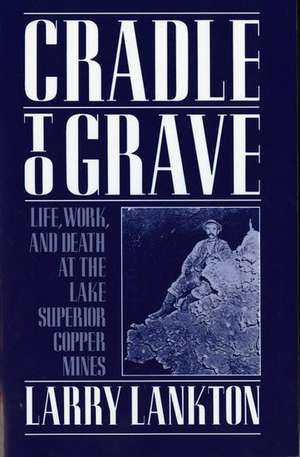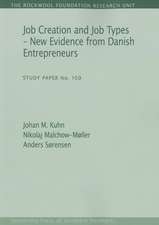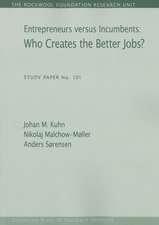Cradle to Grave: Life, Work, and Death at the Lake Superior Copper Mines
Autor Larry Lanktonen Limba Engleză Paperback – 4 feb 1993
Preț: 348.97 lei
Nou
Puncte Express: 523
Preț estimativ în valută:
66.78€ • 69.90$ • 55.58£
66.78€ • 69.90$ • 55.58£
Carte tipărită la comandă
Livrare economică 19-25 martie
Preluare comenzi: 021 569.72.76
Specificații
ISBN-13: 9780195083576
ISBN-10: 0195083571
Pagini: 348
Ilustrații: 25 halftones
Dimensiuni: 236 x 159 x 18 mm
Greutate: 0.51 kg
Editura: Oxford University Press
Colecția OUP USA
Locul publicării:New York, United States
ISBN-10: 0195083571
Pagini: 348
Ilustrații: 25 halftones
Dimensiuni: 236 x 159 x 18 mm
Greutate: 0.51 kg
Editura: Oxford University Press
Colecția OUP USA
Locul publicării:New York, United States
Recenzii
An exceptionally thoughtful, thorough and well-integrated account of labor, business, community and technological change in a fundamental sector of America's second industrial revolution.
Precisely what is needed in the field: a work which combines personal experience, community life, descriptions of work and a specific physical environment. It allows readers to `feel' what life was like for these miners and their families.
Offers rich and thoughtful accounts of technological change as it transformed copper mining....Lankton has offered a penetrating exploration of an important sector of American mining and a model for exploring the interconnections of technological change, management policies, and workplace traditions during industrialization.
Will be quite useful to historians...for its many insights into the paternalistic approach to management, especially in its mediation of technological and economic change.
Should appeal to a large and varied audience....I recommend it to all readers who enjoy stories of the past.
A well-researched, interesting account of the rise and decline of the copper mining industry in Michigan's Keweenaw Peninsula....Focuses on a hitherto neglected aspect of industrial development, and will particularly interest readers concerned with the history of technology and the evolution of corporate labor policies.
Lankton's study is thematic, taking the reader from the heart of the mines to the rock-crushers on the surface and ethnic residential clusters that surrounded them. It includes admirably clear descriptions of complex technologies and their evolution; has powerful passages on accidents, safety practices, and usually humane company supports for the maimed or widowed; and it is written in a vigorous and engaging style.
The single-best treatment ever written of the development of Michigan's copper mining region. It breaks new ground with its incisive analysis....One of the finest books written on the history of mining, a welcome addition to the literature on the history of the Great Lakes region, and a real path-breaking work combining the history of technology, work, and business in an extremely readable and enjoyable volume.
This is excellent scholarship that fills a void in regional and mining history literature.
Cradle to Grave should serve as a model for historians of technology and labor historians as to how both can benefit by combining their interests and thereby deepening their understanding....Lankton writes clearly and with a passion rarely seen in academic writers....Anyone who is interested in Michigan's history will find this a very hard book to put down.
Cradle to Grave is a comprehensive business, social, and ethnic history that belongs on the bookshelf of anyone seriously interested in nineteenth- and twentieth-century mining, ethnic, business, and social history.
Cradle to Grave provides a fascinating account of the history of the copper mines of the Upper Peninsula of Michigan.
An absolutely superb study. Few authors have done as good a job of integrating social, business and economic history with the history of technology and historical geography.
Lankton gives a fine analysis of life and work in the mines and traces in detail the important technological changes taking place by fits and starts between 1845 and 1910....a significant piece of work. Thoroughly researched and thoughtfully written with grace and clarity.
Much of this ground has been covered before....but nobody has ever done as thorough a job of melding together all of the elements in the industry's history as has Lankton.
Precisely what is needed in the field: a work which combines personal experience, community life, descriptions of work and a specific physical environment. It allows readers to `feel' what life was like for these miners and their families.
Offers rich and thoughtful accounts of technological change as it transformed copper mining....Lankton has offered a penetrating exploration of an important sector of American mining and a model for exploring the interconnections of technological change, management policies, and workplace traditions during industrialization.
Will be quite useful to historians...for its many insights into the paternalistic approach to management, especially in its mediation of technological and economic change.
Should appeal to a large and varied audience....I recommend it to all readers who enjoy stories of the past.
A well-researched, interesting account of the rise and decline of the copper mining industry in Michigan's Keweenaw Peninsula....Focuses on a hitherto neglected aspect of industrial development, and will particularly interest readers concerned with the history of technology and the evolution of corporate labor policies.
Lankton's study is thematic, taking the reader from the heart of the mines to the rock-crushers on the surface and ethnic residential clusters that surrounded them. It includes admirably clear descriptions of complex technologies and their evolution; has powerful passages on accidents, safety practices, and usually humane company supports for the maimed or widowed; and it is written in a vigorous and engaging style.
The single-best treatment ever written of the development of Michigan's copper mining region. It breaks new ground with its incisive analysis....One of the finest books written on the history of mining, a welcome addition to the literature on the history of the Great Lakes region, and a real path-breaking work combining the history of technology, work, and business in an extremely readable and enjoyable volume.
This is excellent scholarship that fills a void in regional and mining history literature.
Cradle to Grave should serve as a model for historians of technology and labor historians as to how both can benefit by combining their interests and thereby deepening their understanding....Lankton writes clearly and with a passion rarely seen in academic writers....Anyone who is interested in Michigan's history will find this a very hard book to put down.
Cradle to Grave is a comprehensive business, social, and ethnic history that belongs on the bookshelf of anyone seriously interested in nineteenth- and twentieth-century mining, ethnic, business, and social history.
Cradle to Grave provides a fascinating account of the history of the copper mines of the Upper Peninsula of Michigan.
An absolutely superb study. Few authors have done as good a job of integrating social, business and economic history with the history of technology and historical geography.
Lankton gives a fine analysis of life and work in the mines and traces in detail the important technological changes taking place by fits and starts between 1845 and 1910....a significant piece of work. Thoroughly researched and thoughtfully written with grace and clarity.
Much of this ground has been covered before....but nobody has ever done as thorough a job of melding together all of the elements in the industry's history as has Lankton.
Notă biografică
Larry Lankton is the Associate Professor of History at Michigan Technological University.














